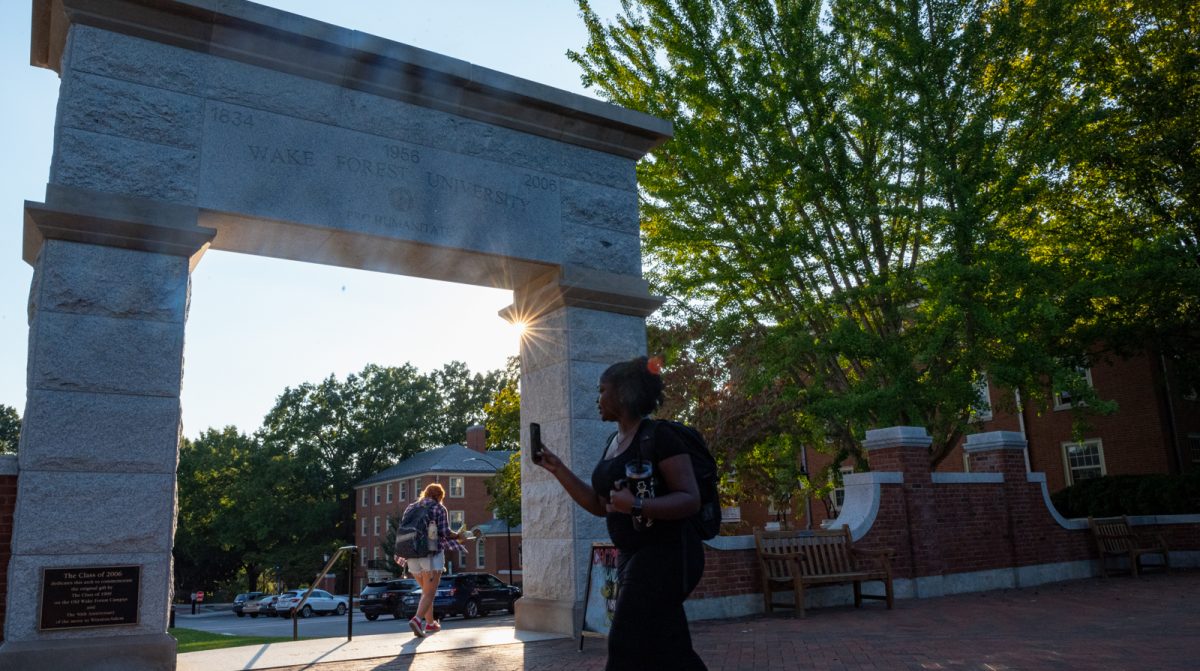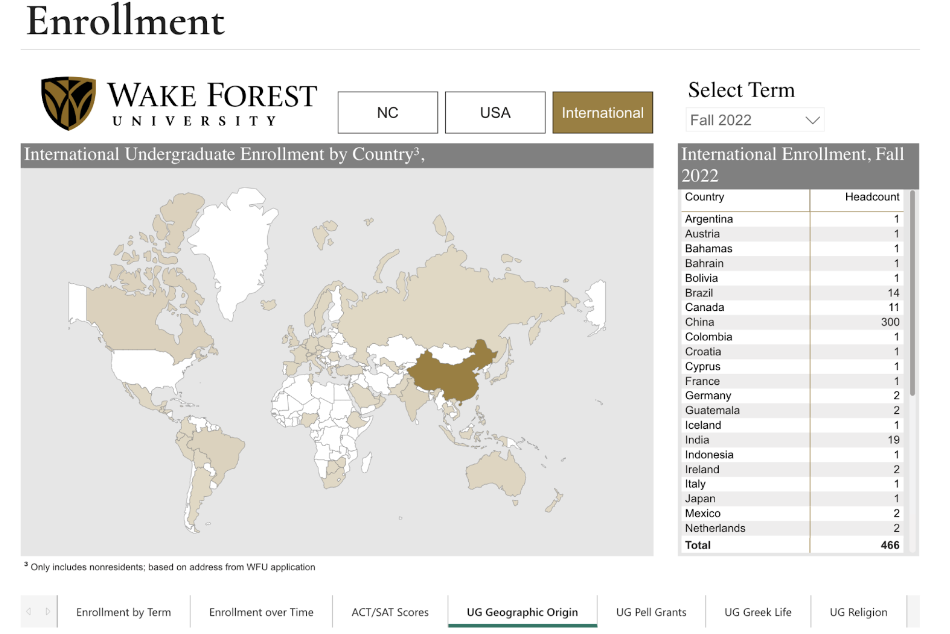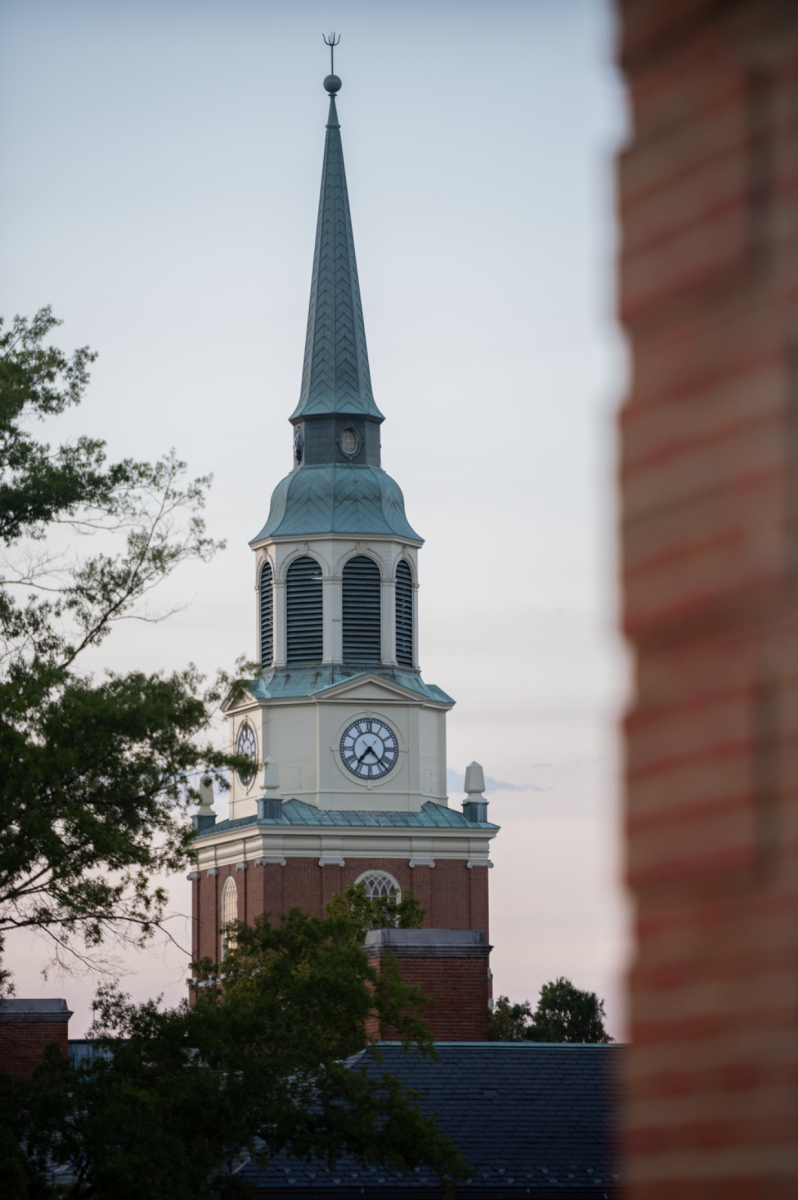Wake Forest dropped 18 spots in the U.S. News & World Report “Best National Universities” rankings list, which was released two weeks ago. This list has earned immense popularity among prospective university students since its launch in 1983, and this year, the news organization significantly changed its methodology.
The Old Gold & Black examined how U.S. News crunches the numbers and exactly what changed this year.
The U.S. News Method
According to U.S. News, the organization evaluates 1,500 four-year bachelor’s degree-granting American institutions. This year, these institutions were measured by 19 metrics, and the top 439 were ranked.
The rankings are assembled using data reported directly from schools and federal third-party sources. Wake Forest President Dr. Susan Wente told the Old Gold & Black that Wake Forest did submit data to U.S. News this past spring.
Some universities have elected to stop submitting data. The law and medical schools at Stanford, Harvard, the University of Pennsylvania and Duke all have boycotted the rankings, and Columbia University became the latest undergraduate school to drop out of the rankings this summer. Even if a school does not submit data, it can still be ranked.
We will continue to reflect on whether or not we should or should not be submitting data. And we’ll be watching what others are doing and also how U.S. News is reacting.
— President Susan Wente
Wente said that Wake Forest is evaluating whether it’s time to also quit the rankings.
“We have had discussions at the institutional level on should we or should we not [submit data], especially last spring when the law schools [at Stanford, Harvard, Duke and others] were withdrawing from them,” she said. “But then, seeing how U.S. News was reacting to that, and they’re pivoting to using only publicly accessible data, we thought that by submitting data, we would at least know that the data…is accurate.”
She continued: “We will continue to reflect on whether or not we should or should not be submitting data. And we’ll be watching what others are doing and also how U.S. News is reacting.”
Wente also said that the university will reevaluate its relationship to the U.S. News rankings, a flawed system Wake Forest leaders have criticized since last week. While our overall national university declined, Wake Forest’s School of Law ranking improved, moving from 35 to 22.
“Do you celebrate that? We’ve got to think about this as an institution,” Wente said. “Now is the time to think about that.”
The schools are ranked using data from each measure that are then standardized and weighted from 0-100. The best college(s) receive a score of 100, and the rankings are scaled from there. Other institutions receive a score anywhere from zero to 99 — “reflecting the distance from their ranking’s top-performing schools.”
The metric with the most weight is the “peer-assessment score,” comprising 20% of the total calculation. U.S. News defines peer assessment as “a two-year rolling average of ratings on academic quality [the university] received by presidents, provosts and deans of admissions.”
Wente has completed peer assessment surveys since her time as a provost at Vanderbilt University. She described the survey as being “qualitative and subjective,” having just a few questions for all 435 institutions. Administrators are asked to rank each institution on a scale of one to five.
That ranking will be very variable. It’s not really an assessment of the undergraduate teaching. It’s people’s opinions.
— President Susan Wente
Wente said Wake Forest participates in the rankings because she believes that if we’re submitting data for other metrics, then Wake Forest should also submit data for the peer assessment.
Wente ranks other schools based on what she knows about their commitment to educational quality.
“I based it off things like their focus on instructional, pedagogical approaches that benefit all students on their campuses — not only in terms of working to build diverse, representative student bodies, but also ensuring the success of those student bodies in that way. It’s very subjective.”
If an administrator is unfamiliar with a school, they can select “not applicable” and skip the question. Wente says she does this for schools with which she is not familiar.
According to Phil Handwerk, assistant provost of institutional research at Wake Forest, Wake Forest has received a 3.7 out of 5 for at least three years, including 2023. This score stays mostly the same year to year, and the survey uses similar questions every year.
Wake Forest also fell 10 spots in the U.S. News in its undergraduate teaching ranking, which is calculated solely on peer assessment scores. Administrators are asked to nominate 15 universities they believe have a strength in undergraduate teaching.
“Each year, our ranking depends upon who chooses to answer that question and who’s top of mind when they do it,” Wente said. “That ranking will be very variable. It’s not really an assessment of the undergraduate teaching. It’s people’s opinions.”
How Wake Forest stacks up using the new methodology
The new methodology helped many public universities rise considerably in the rankings while many private universities like Wake Forest fell.
This year, U.S. News no longer considered the following criteria, many in which Wake Forest excels, which collectively accounted for 18% of last year’s rankings:
- Class size
- Professors with terminal degrees (the highest degree achievable in their respective fields)
- Alumni giving average
- Graduate debt proportion borrowing
- High school class standing
“U.S. News no longer measures things that make us who we are,” Wente said in a Sept. 18 email to the university community.
Wake Forest’s average student-to-faculty ratio is 10:1 — compared to the national average of 18:1. Additionally, 99% of all undergraduate classes at Wake Forest have fewer than 50 students, and 95% of faculty have a terminal degree at Wake Forest.
During the 2021-22 academic year, Wake Forest saw a 24% alumni giving rate, which is 124% higher than the national average of 11%. In the same year, alumni gave a whopping $91,820,239 in charitable contributions — making up 36% of the total charitable contributions to the university.
According to the U.S. News website, the average debt at graduation for a Wake Forest student is $31,476 — lower than the national average of $37,718.
In addition to removing some metrics, U.S. News added the following criteria:
- First-generation graduation rates
- First-generation graduation rate performance
- College graduates earning more than a high school graduate
- Citations per publication
- Field-weighted citation impact
- Publications cited in the top 5% of journals
- Publications cited in the top 25% of journals
Wente especially raised concern with the third metric, which measures if a university’s graduates earn more than a high school graduate.
“Does that mean we don’t value K-12 teachers,” Wente said. “Nationally, we underpay our K-12 teachers. But if you’re going to make $40-50k a year as a starting K-12 teacher, you can’t do that with a high school diploma. But does that mean your college education was not worth it?”
“Pro humanitate is at the core of what we do, and that inspires a lot of Wake Forest graduates to go into a range of career paths,” Ashleigh Brock, chief of staff to the Office of the President, said. “Not everyone’s going to be an investment banker in their first year after college. I don’t think our motto would suggest that we want that.”
We’re going to continue to focus on our values and our strategy, and we’re not going to change our mission based on what U.S. News is doing, or what it’s deciding to measure.
— President Susan Wente
U.S. News also gave slightly more weight to the graduate rates of students receiving Pell Grants. According to the Office of Institutional Research, Wake Forest’s six-year graduation rate for Pell Grant students is 93%.
“Wake Forest has long been committed to social mobility, but our scale and scope are different from those with huge enrollments,” Wente said. “I’m proud of where we are. Over the last three years, the percentage of Pell students has gone up. We’re at 12%. That’s a 10-year-high watermark for us.”
Wente said that the Pell Grant graduation is dependent upon scholarship funding and that the university is focused on raising $25 million this year. Wake Forest launched the “For Humanity” initiative last March, raising $50 million for scholarships.
The fifth criteria, field-weighted citation impact, is a way to measure how influential or essential a research paper is within its specific field of study. This measurement considers how often other researchers have cited a paper but adjusts this number to make it fair for different research areas. Wake Forest has 62 publications in the top 25% of journals and 21 in the top 5%. U.S. News ranks journals solely based on how many citations it has within its field. For example, a journal with more citations than 75% of journals in said field is ranked in the top 25%, and so on.
Moving forward
Wente expressed that Wake Forest must discover new ways to “tell its story.”
Wente told the New York Times last week that Wake Forest is not going to “chase rankings.” She told the Old Gold & Black what she means by that is that “We’re going to continue to focus on our values and our strategy, and we’re not going to change our mission based on what U.S. News is doing, or what it’s deciding to measure.”




















